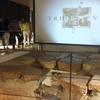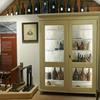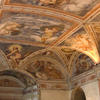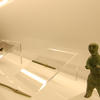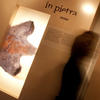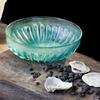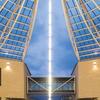August in Trentino
Castles, fortifications, museums, archaeological areas in Trentino to be visited in August

For those who spend their holidays in Trentino, but also for everyone living here, a visit to castles, fortifications, museums, archaeological areas could be an excellent idea. Culture, in fact, offers a wide range of opportunities on the entire province of Trento; to discover the most ancient history of our region, don’t miss:
- the S.A.S.S. Spazio Archeologico Sotterraneo del Sas (Tridentum. S.A.S.S. - Underground Archaeological Site SASS) (opening times: 9.30-13.00; 14.00-18.00) where, in addition to the remains of the Roman Tridentum, visitors have also the opportunity to visit the exhibition Ostriche e vino. In cucina con gli antichi romani (Oysters and wine: in the kitchen with the Ancient Romans), which gives us a glimpse on food culture in ancient times along the river Adige, with finds from the archaeological investigations in Trentino;
- at the Cappella Vantini of Palazzo Thun, not far from the S.A.S.S. - via delle Orne - the exhibition Storie senza Storia. Tracce di uomini in guerra, 1914-1918 (Stories without history: traces of men in war, 1914-1918) showcases materials found at high altitude during the recovery of Great War soldiers’ remains; it can be visited from 9.30 to 13.00 and from14.00 to 18.00 (free admission).
- the Museo Retico (the Rhaetian Museum), opening times: 10.00-13.00; 14.00-18.00
The Museo Retico is located in Casalini di Sanzeno, an extremely important area for archaeology. The excavations carried out here are known all over the world, because they have allowed to retrace thousands of years of history from the Paleolithic hunter-gatherers to the first Neolithic farmers, the Copper age blacksmiths and the worship sites of the Bronze age.
But the real protagonist here are the Rhaetian people, who lived in Trentino and Tyrol before the Romans. Their ethnic origin is uncertain: Pliny says they were descendants of the Etruscans, but there are also clear signs of a relationship with the Celts. At the Museum you can see their beautiful artistic artifacts, objects of worship, work tools, simple testimonies of daily life;
- the Museo delle Palafitte di Fiavé (Museum of Pile dwellings of Fiavé) , open from 14.00 to 18.00
With its pile dwelling museum and internationally renowned archaeological area, included within the UNESCO world heritage site described as “Prehistoric Pile dwellings around the Alps”, Fiavé represents an exceptionally important point of reference for the history of the most ancient European farming communities.
The museum explores the history of the different pile dwelling settlements following one another along the banks of Lake Carera, a lake of glacial origin, between the Late Neolithic era and the Bronze Age.
- “Giardini ritrovati. Spazi e caratteri delle architetture verdi in Trentino” (“Rediscovered Gardens. Spaces and features of green architecture in Trentino”) at Palazzo delle Albere is a multimedia itinerary that describes the peculiarities of the typical garden of Trentino.
- Very rich and varied is also the cultural offer by the several provincial museums: Mart, Muse, Castello del Buonconsiglio (together with Thun Castle, Beseno Castle, Stenico Castle), Museo degli usi e costumi della gente trentina.
In short, the following other museums are no doubt worth visiting:
- at the MUSE in Trento, the exhibition Genoma umano. Quello che ci rende unici (Human genome. What makes us unique) looks at questions profoundly affecting us all that are today the subject of important and promising biological research. Genomics is a science in continuous evolution that also raises certain ethical questions and doubts. “The Human Genome” therefore promises to be a real journey through the new challenges offered by genomics, focussing on the opportunities and risks involved in applying the new breakthroughs in particularly sensitive areas, such as health.
- the Museo diocesano tridentino hosts Nostalghia. Viaggio tra i cristiani d'Oriente (Nostalghia. Journey among the Christians of the East), a photographic exhibition, testimony to almost three years of Linda Dorigo and Andrea Milluzzi’sjourney among the Christian communities of nine states in the Middle East (Iraq, Iran, Lebanon, Egypt, Israel, Palestine, Jordan, Syria and Turkey).
- at the Galleria civica, Vicino. Non qui (Close. Not Here. Paths of Tridentine Creativity ) assembles in Trento, for the first time, those Tridentine artists – by birth or election – who have built their international careers elsewhere, in or outside of Italy.
- at the Gallerie di Piedicastello the exhibition L'ultimo anno: 1917-1918 (The final year: 1917-1918) is dedicated to the Great War on the Italian-Austrian front in its most critical and crucial moment.
- ethnography of Trentino can be discovered and enjoyed at the Museo degli usi e costumi della gente trentina (Museum of the habits and customs of the people of Trentino in San Michele all’Adige), while the landscapes of Italy, a favourite destination for European travellers venturing off on the traditional Grand Tour, are featured in the exhibition dedicated to nineteenth-century painting at the Mart of Rovereto: Viaggio in Italia, I paesaggi dell’Ottocento dai Macchiaioli ai Simbolisti (Italian Journey 19th-Century Landscapes from the Macchiaioli to the Symbolists)
Further information in our website, here: "exhibitions"
10/08/2018
